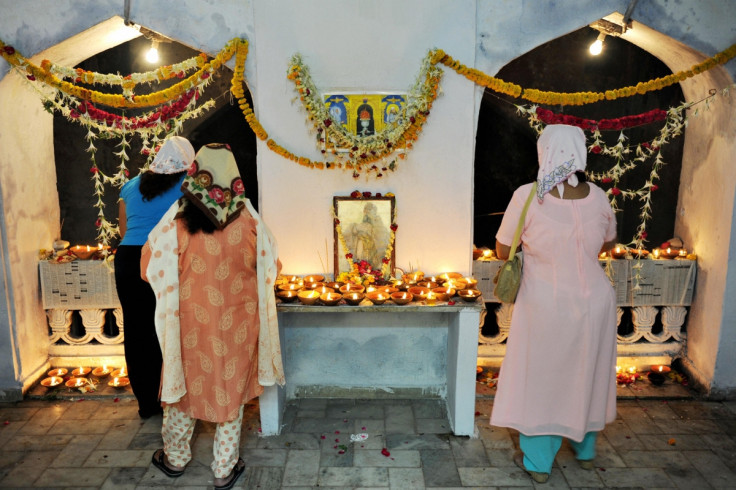Nowruz 2016: Who are Persia's Zoroastrians and why is their festival being celebrated in India?

On 20 March a number of people of the Zoroastrian faith will mark the festival of Nowruz. This is the Iranian New Year and is celebrated on the vernal equinox to mark the beginning of spring, with the word "Nowruz" translating to "new day".
In 2009 the United Nations put Nowruz on the Representative List of the Intangible Cultural Heritage of Humanity. The following year, the United Nations General Assembly voted to mark 21 March as International Nowruz Day.
UN Secretary General Ban Ki-Moon said: "This ancient new year tradition coincides with the arrival of spring, giving rise to a rich array of customs, rituals and festivities, from communities in western, central and southern Asia, to the Caucasus, Balkans and other regions."
While Nowruz is primarily recognised as the Iranian New Year, countries around the world commemorate the day, particularly India. India hosts the world's biggest population of Zoroastrians, despite the religion having its origins in Persia.
IBTimes UK rounds up everything you need to know about Nowruz, the Zoroastrians, and how the religion made its way to the Indian subcontinent.
Who are the Zoroastrians?
Few people have heard about the religion of Zoroastrianism and this is due to the fact that the faith is rapidly facing extinction. The Heritage Institute notes that the Guinness Book of World Records lists Zoroastrianism as the "major religion nearest extinction".
Despite a receding number of followers, Zoroastrianism is believed to be one of the world's oldest monotheistic religions. The Prophet Zarathustra founded the religion in ancient Persia – now Iran – roughly 3,500 years ago.
For 1,000 years Zoroastrianism was known as one of the world's most powerful religions, having been the official religion of Persia from 600BC to 650AD. It is now one of the world's smallest religions.
According to the Heritage Institute, there are only 137,000 Zoroastrians in the world, with 69,000 of them now living in India. Iran has the second highest population of Zoroastrians at roughly 20,000.

What do Zoroastrians believe?
Zoroastrians believe that there is one God, named Ahura Mazda, which translates to "Wise Lord". They believe that Ahrua Mazda created the world and that Prophet Ahura Mazda was the one to reveal this about their God through the holy book, the Avesta.
The slogan of the Zoroastrian religion is "Good Thoughts, Good Words, Good Deeds" and Zoroastrians typically pray several times a day, although there is no fixed pattern. Followers of the religion believe that fire has elements that are pure and that it represents God's light and wisdom.
Due to this, Zoroastrians pray communally in an agiary or fire temple, where a sacred fire burns and is never extinguished. Prayers are said facing the sun, fire or any other source of light and purification is strongly emphasised in order to defeat evil or Angra Mainyu.
Why are there so many Zoroastrians in India?
In the 10<sup>th century a number of Zoroastrians were forced to flee Iran in order to escape persecution from Muslim invaders and continue practising their religion freely. Many of them ended up in Gujarat in western India, where the local ruler allowed them to stay as long as they promised to integrate into society as Indians.
This group of Zoroastrians were named Parsis, which is the Gujarati word for Persian. In order to survive religious prosecution in India, the Parsis had to introduce certain religious reforms.
In the 20<sup>th century the Parsi community responded to increasing urbanisation and cultural diversity better than most other religious groups in India. Many in the country began to respect the Parsis because of their contributions to society, particularly in the field of business.
How is Nowruz celebrated by the Zoroastrian community?
In the spirit of purification, Nowruz typically sees Zoroastrians cleaning their homes to mark the new year. The festival is also a celebrated as a coming together of communities, with friends, family and neighbours paying visits to each other throughout the day.
Many Zoroastrians believe that it is a bad omen to stay at home on Nowruz, so communities gather together for fireworks displays or feasts of food. Bonfires are typically lit in Iran and people gather around it to mark the beginning of spring.
Food plays a big part in the new year festivities, with families gathering around a "Haft-Seen table". A number of edible items beginning with the letter "s" is then layed out on a tablecloth, such as sharab (wine), shakar (sugar), shir (milk), senjed (sorb tree berry), sumanu (pudding made from wheat germ) and shirin berenjor (sweet meat).
© Copyright IBTimes 2025. All rights reserved.






















